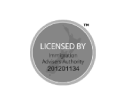For IT and engineering professionals seeking Australian skilled migration, selecting the correct skills assessing authority is critical. This determines whether your qualifications and experience meet Australia’s standards for your nominated occupation. The designated authority varies by occupation, with the Australian Computer Society (ACS) handling IT roles and Engineers Australia overseeing engineering disciplines. Misalignment can derail visa applications, so precise selection is non-negotiable.
Australian Computer Society (ACS) for IT Professionals
ACS assesses qualifications and work experience for ICT occupations like software engineers, network administrators, and data analysts. Key requirements include:
- Educational equivalence: Non-Australian IT degrees must align with Australian Qualifications Framework (AQF) standards[1][5].
- Work experience validation: Minimum 2-8 years of relevant experience post-qualification, with exact requirements varying by qualification level[1][5].
- Specialization documentation: Detailed employment references proving skills in your nominated ANZSCO code.
The ACS process prioritizes currency of skills, requiring evidence of recent professional development. Applicants without Australian degrees may need supplementary training or additional experience[5].
Engineers Australia for Engineering Disciplines
Engineers Australia handles assessments for civil, mechanical, electrical, and other engineering occupations. Their framework includes:
- Pathway determination: Three streams exist based on qualifications (accredited vs. non-accredited)[2][4].
- Competency Demonstration Report (CDR): Essential for non-accredited degrees, comprising career episodes, summaries, and continuing professional development records[1][2].
- Stage-based assessment: Provisional assessments for recent graduates versus full assessments for experienced professionals[4].
Engineering applicants must demonstrate technical competency alignment with Australian industry standards. Licensed occupations (e.g., structural engineering) may require additional state-specific validations.
Critical Comparison: ACS vs. Engineers Australia
| Factor | Australian Computer Society (ACS) | Engineers Australia |
|---|---|---|
| Assessment Documents | Transcripts, employment proofs, CV | CDR, academic transcripts, CV[1][2] |
| Experience Requirements | Strict recency rules (last 10 years) | Broader historical acceptance[1][5] |
| Processing Time | Typically 8-12 weeks | 12-16 weeks (CDR pathway)[2][4] |
| Special Considerations | ICT minor fields require skill audits | Non-accredited degrees need CDR[1][2] |
Strategic Application Advice
- Occupation-first selection: Confirm your ANZSCO code matches your primary role before choosing an authority[1][4].
- Document aggregation: Gather position descriptions, tax records, and project evidence early—missing documentation causes 70% of delays[1][5].
- Proactive skill upgrades: Consider ACS Professional Year programs or Engineers Australia Chartered Status to strengthen applications[2][5].
- Timeline management: Initiate assessments 6-8 months pre-visa application to accommodate appeals or re-submissions[4].
Common pitfalls include underestimating experience documentation depth and overlooking occupation-specific requirements. IT professionals often miscalculate “skilled employment” periods, while engineers may under-detail CDR career episodes[1][2][4].
Choosing the correct authority is foundational to Australian skilled migration. IT and engineering professionals must align their preparation with their designated assessor’s specific frameworks to validate their readiness for Australia’s workforce.










